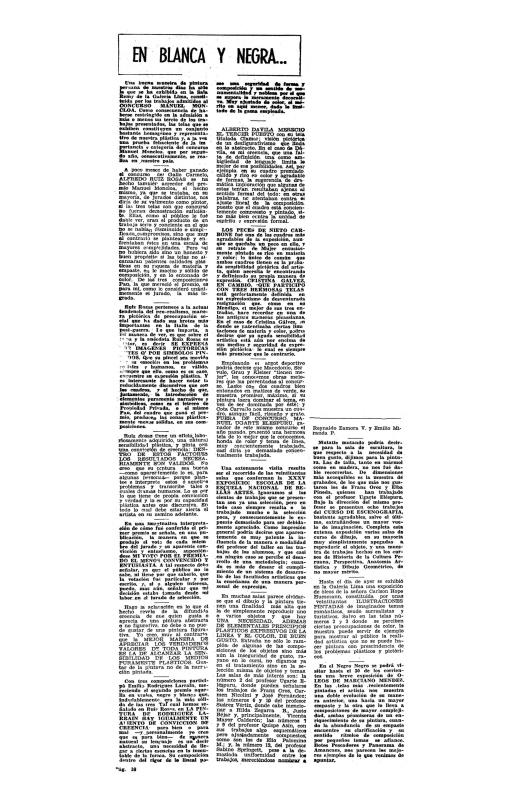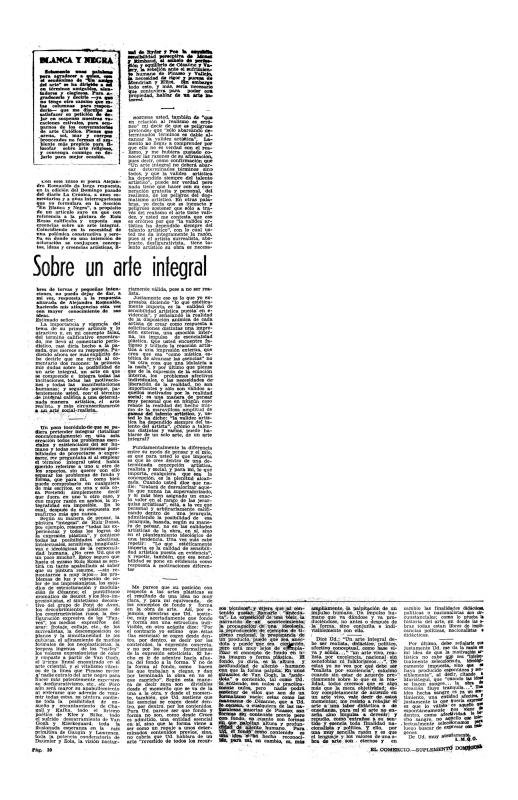In 1955, the painter Fernando de Szyszlo (b. 1925) won First Prize at the III Salón de Pintura Manuel Moncloa [3rd Manuel Moncloa Painting Salon], which eventually became the most important competition in the Peruvian art scene. Szyszlo had in fact played a key role in the defense and promotion of abstract art on his return to Lima (in 1951), as a result of both his own work and his fondness for arguing, a trait that triggered debates. [See, in the ICAA digital archive, the article “Dice Fernando Szyszlo que no hay pintores en el Perú ni América: el joven pintor peruano declara sentir su pintura y la de los demás pero no puede explicarla” (anonymous) (doc. no. 1137793)]. The success of non-figurative art in the Lima art milieu is important when we consider that the previous prize was awarded to Alfredo Ruiz Rosas (1926–2002), a painter who was clearly committed to social realism. That, too, was a significant event, which also stirred up debate. [See the following articles: by Manuel Jesús Orbegozo, “Un ‘pan’ común, de todos los días, amasado por Alfredo Ruiz Rosas, ganó diez mil soles” (doc. no. 859785); by Luis Miró Quesada Garland, “En blanca y negra…” (doc. no. 859805), “En blanca y negra” (doc. no. 859826), “Sobre un arte integral” (doc. no. 1227195), and “Sobre un arte integral” (doc. no. 859917); by Alejandro Romualdo Valle, “Sobre un arte integral (respuesta al arquitecto Luis Miró Quesada G.) (doc. no. 1227139), “Sobre un arte integral: punto final” (doc. no. 1227176), and “Ruiz Rosas y un arte integral” (doc. no. 1227027)]. Though some figurative artists decided not to submit their work to the III Salón, the overwhelming participation of abstract painters underscored the style’s success among young artists, which was later confirmed at the I Salón de Arte Abstracto [First Abstract Art Salon] in 1958.









